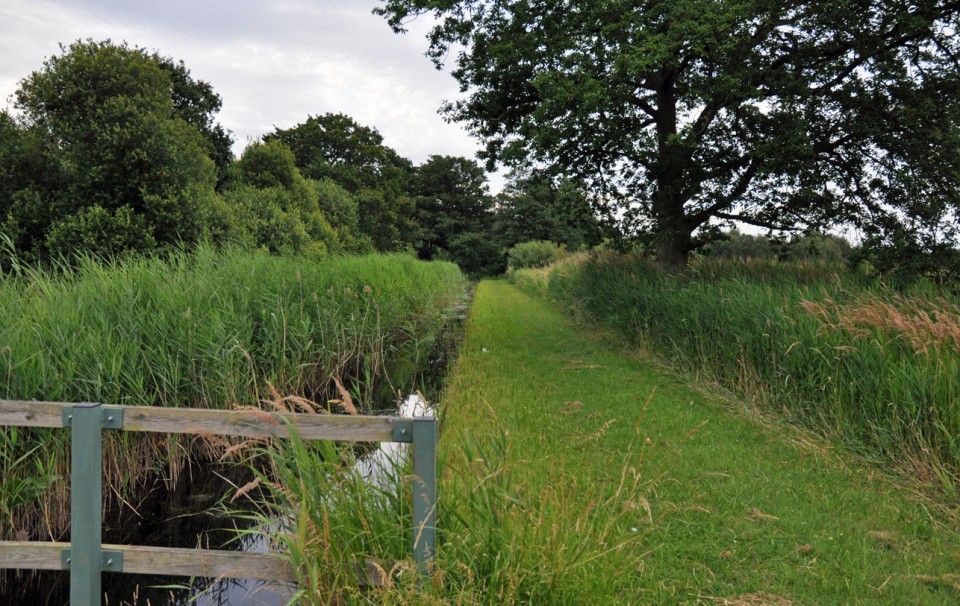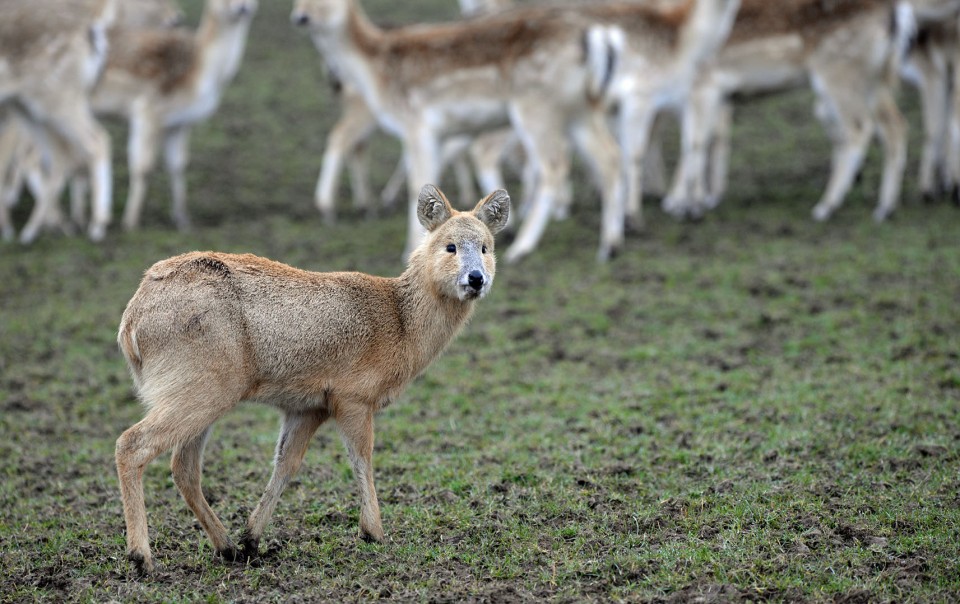Water Deer Population & Abundance - England
Outside of Arnold Cooke and Lynne Farrell's comprehensive study of water deer in Cambridgeshire, we have relatively few data on their population and density across their feral range in Britain. Most farmland populations are managed in some way, such that the density is probably more a result of desired numbers than the carrying capacity. Where direct management of the deer is lower, such as in fenland nature reserves, populations fluctuate according to land management practices. Cooke gave a nice example of how habitat management can have significant ramifications in his 2019/20 Deer Surveillance Report for Woodwalton Fen:
"The population increased [from 2006] up until 2010/11 because of the presence of elephant grass on Mormon land for several years, but then decreased even more dramatically due to loss of the crop and to inclement weather conditions in some years. I suspect that the population is currently at the highest level the landscape can sustain, but could change in the longer term if there were major management changes in the reserve or on the farmland – and could decrease in the short term if there was extreme weather."

While we know from the above study, Gérard Dubost's data collected at Branféré Zoological Park, and census information from Whipsnade that populations can build very rapidly, doubling every 1.27 years in good conditions, variations in land management may help explain how water deer populations have failed to persist in some spots, disappearing a few years after their initial colonisation. This is presumably part of the explanation for water deer showing the lowest expansion of any of our introduced species since 1972 that Adrian Ward noted in his 2005 review.
It is important to note that density estimates are highly dependent on the context of habitat, season and disturbance. Within any given area there will be pockets that attract and support higher numbers of water deer than others, while biotic and abiotic factors may serve either to concentrate or dissipate deer. The abundance of water deer on an undisturbed spring grass crop, for example, has the potential to be substantially higher than that in nearby woodland, or in the same area during the autumn when there is harvesting and/or gamebird shooting taking place. In Buckinghamshire, for example, Sharon Scott has observed that the number of water deer on her farm increases in the weeks when neighbouring estates are undertaking organised shoots. Similarly, densities may be higher in nature reserves than on surrounding farmland, particularly if that farmland is used to pasture livestock. Additionally, the time of year has a considerable impact on how many deer are likely to be found in any given area, with higher concentrations often observed during the winter rut. Consequently, the following values are intended to give examples of some of the densities that have been recorded in England, and should not be presupposed to apply to habitat elsewhere, suitable for extrapolation to a county or national level, or necessarily reflect the current situation.

At Whipsnade during the early 2000s the population stood at an estimated 2.4 per hectare, which appears to be the highest ever recorded for England, albeit a semi-free-range captive population. During the winter of 2019/20, Arnold Cooke estimated the water deer population on the Woodwalton Fen reserve to be around 0.8 per ha, although the presence of elephant grass (Miscanthus sp.) on an adjacent farm for several years had resulted in higher estimated densities, peaking at just over one deer per hectare in one winter, until its removal in 2011. In their 2008 chapter, Cooke and Lynne Farrell give average densities at both Woodwalton and on the Norfolk Broads of around 0.1 per ha and, in Muntjac and Water Deer, Cooke noted that the density was maintained at 0.09 per ha on one area of farmland in Bedfordshire, although higher densities have been estimated based on counts by the Bedfordshire Natural History Society, suggesting between 0.2 and 0.5 deer per hectare during the early 1990s. No formal data exist, but I suspect some of the game estates in the Woburn and Norfolk regions may substantially exceed this. Indeed, in an article to Country Life magazine in October 2024, Paula Lester wrote that the population of water deer on the Beckerings Estate in Bedfordshire was maintained at around 1,000 animals, an average density of 1.5 deer per hectare. Similarly, more recent surveys across the Norfolk Broads suggest significantly higher densities are present now than even a decade or two ago. A thermal drone survey on one estate in Norfolk during 2023, for example, identified 211 water deer, an overall density of 0.5 per hectare, but densities were double this on the grazing marshes. The impact assessment published by the Broads Authority during 2025 also noted that, in places, water deer exceeded 100 per sq-km (i.e., 1 per ha). I know of no comparable data for neighbouring Buckinghamshire, or for Essex or Suffolk, although, in October 2024, I received a report from one landowner in Buckinghamshire of "about 200 water deer" on a 1,000-acre holding, translating to about 0.5 deer per hectare.
In terms of overall numbers, most current published figures for England are likely to be a significant underestimate. In 1995, The Mammal Society estimated the water deer population at around 650. At their Autumn Symposium on British Mammal Populations in 2004, the Society announced this had risen to about 2,100, some 1,500 of which were free-living in England. I anticipate that it's this 1,500 figure to which the Tracking Mammals Partnership were referring, in their 2005 report UK Mammals, when they wrote that there were "less than 2,000" water deer in England. Subsequently, in his 2009 assessment to International Urban Ecology Review, Arnold Cooke estimated there to be about 4,000 of the species living wild in England based on available data on distribution and density at the time. Two years later, writing in Deer, Cooke noted that, based on a combination of local and national distributions along with his own observations in Cambridgeshire, the population was possibly around 7,000 in 2010. More recently, in the Mammal Society's Britain's Mammals 2018, the population range was given as a staggering 200 to 143,000, with a 'high tentative estimate' of 3,600. These figures came primarily from a modelling analysis conducted by biologists at the Animal and Plant Health Agency, led by Simon Croft, published in 2017. In their discussion, the authors note that, unfortunately, the estimates were based on old density data for water deer and the 3,600 covers only arable and improved and rough grassland, with wetland density information absent from the analysis.
In Muntjac and Water deer, published in 2019, Cooke provided his updated opinion that the population was likely in the range of 5,000 to 10,000 in England. During a chat over coffee in 2022, Arnold told me that he thought England's wild population was "closer to 10,000 than it is to 1,000 or 100,000", very tentatively suggesting the number was probably 7,000 to 8,000 animals. In his contribution to the Huntingdonshire Flora & Fauna Society Annual Report, published in 2025, Cooke upgraded this to 18,000, noting that the actual figure may be substantially higher. While Cooke's 18 thousand figure remains the most recent published estimate for England of which I'm aware, recent thermal done surveys carried out by BH Wildlife Consultancy, in collaboration with The Forestry Commission, tentatively imply numbers may be significantly above even this, at least in the high tens of thousands and perhaps even the low hundreds of thousands, but data are still being gathered and processed at the time of writing (June 2025).
If we consider the appraisal that there were "no more than 5,000 water deer in China" that East China Normal University biologist Min Chen gave Richard Fautley in 2011 to be the current (or close to the current) situation, the UK's population would seem to be of conservation significance. Indeed, both Fautley, in his Ph.D. thesis, and Rory Putman and colleagues in their 2021 paper to the Zoological Journal of the Linnean Society, proposed that the 7,000 deer in Cooke's 2010 estimate, coupled with about 500 animals in captivity in Britain, probably accounted around 40% of the global population.

In my view, the number currently in captivity here in Britain is probably substantially fewer than 500. Whipsnade's inventory for 2025 suggests 40-50 water deer in their collection, but for argument's sake let's assume that's an underestimate and say there are 60. We can only guess at Woburn's number as they don't release their official census data, but in 2014 one of their park managers told me they aim to maintain about 30 in the park. Houton Hall is also an unknown, but it's parkland akin to Woburn and perhaps in the same ballpark, while (as of May 2025), Watatunga have about half a dozen individuals on their reserve, and a single individual resides at the Wildwood Trust in Kent. In my opinion, therefore, Britain's captive population is unlikely to exceed 250 animals, and is probably closer to 150.
If we accept Min Chen's estimate for China and Cooke's lower 2019 estimate for England at face value, the UK population (wild and captive) might contribute at least 50% of the animals found both here and in China, increasing to nearly 80% using Cooke's 2025 estimate. If the huge guestimate of at least half a million in South Korea that was extrapolated by the Ministry for the Environment in 2018 is correct, the UK's contingent of water deer represents perhaps 1-4% of the global total*, depending whether we consider the 2019 or 2025 estimates. If the thermal surveys touched upon above yield significantly higher numbers than previous estimates, as I suspect they will, Britain's water deer population may be found to contribute 20% or more of the global total. It is worth keeping in mind that, whatever proportion of the global water deer population Britain's contingent contributes, our population is likely to be of conservation significance. Indeed, it seems clear that significantly more water deer reside in England than in China at present, and Putman's data point to a genetic lineage here that's now extinct in the wild in China.